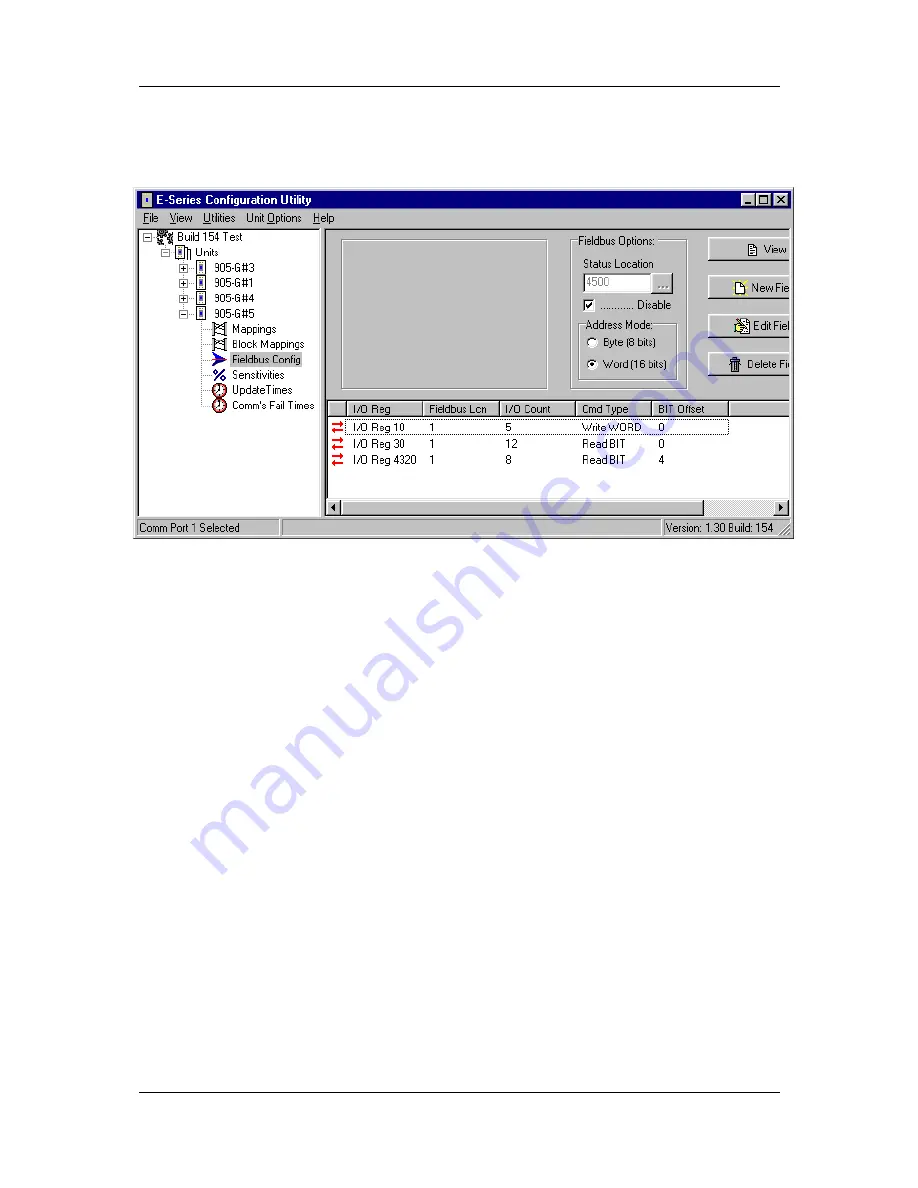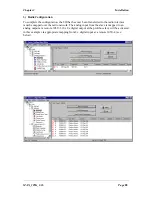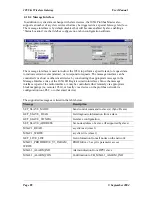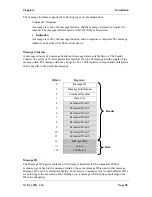
105U-G Wireless Gateway
User Manual
Page 75
© September 2004
Three Fieldbus Mappings are illustrated in the example below. Note that “Word Address
Mode” is selected, meaning that the Fieldbus Interface IN and OUT Areas will be treated as
word-addressed arrays by configuration software. The parameters for each fieldbus mapping
were setup using the mapping configuration screen as described above.
The first Fieldbus Mapping is a “Write WORD” mapping, writing I/O Registers 10 – 15 from
the Radio Interface to word-locations 1 – 5 in the Fieldbus IN Area. Because the
transfer
mode
is “word” complete 16-bit registers are transferred.
The second mapping is a “Read BIT” mapping, reading 12
bits
from Fieldbus OUT Area
word-location
1(word address mode is selected) to I/O Registers 30 – 41. Remember that for
such a BIT transfer, that each individual bit in the Fieldbus Interface is transferred to an
entire 16-bit I/O Register. Note also that there is a word-location 1 for both the Fieldbus OUT
and
IN areas.
The third mapping is another “Read BIT” mapping, reading 8 bits from Fieldbus OUT Area
word-location 1 to I/O Registers 4320 – 4327 (i.e. local DOT 1 – 8). Note here that we are
again reading from Fieldbus OUT Area word-location 1 (as with the previous mapping).
However, since each word-location contains 16-bits and the last mapping used only 12 of
those, we have been able to follow on from the previous mapping (see below).
The Fieldbus Register Selection screen below was shown when selecting the Fieldbus OUT
Area location for the third mapping in the above example. This screen shows the currently
used portion of the Fieldbus OUT Area, and allows the user to graphically select the location
for the current mapping. NOTE – by default configuration software will always choose the
next available Fieldbus Interface register for fieldbus mappings. Allowing configuration
software to automatically make the selection is strongly recommended wherever possible.
Clicking on the required location in the top panel will alter the currently selected word-
location. Further, clicking individual bits in the “Bit Usage” panel at the bottom of the screen,
allows the current BIT mapping to be specified at the bit-level of the currently selected word.
The lighter blue areas indicate the extent of already existing fieldbus mappings. It can be seen
that bits 0 – 11 of word location 1 have already been used (by the second mapping in the






























